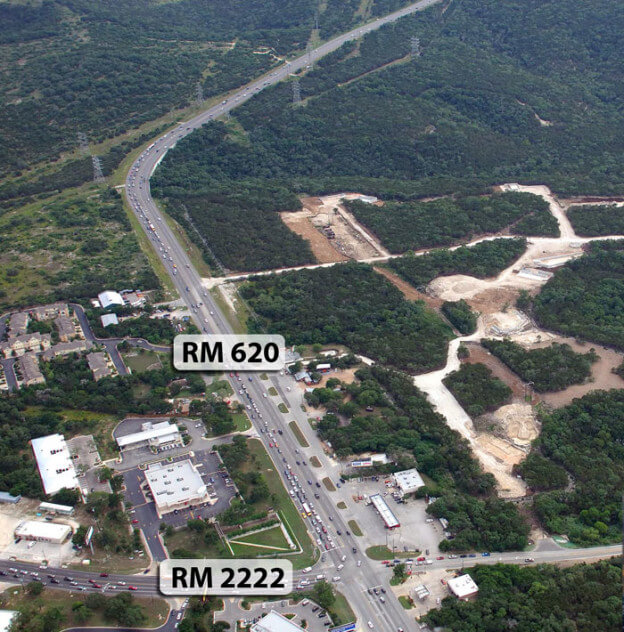 Background: Water Treatment Plant 4, located in the center of Four Points, opened nearly four years ago in December of 2014. After five years of construction, the $508 million plant is now supplying Austin with drinking water along with other city of Austin plants. Because of the area flooding and the added debris, mud and silt to clean from the water supply, the city of Austin issued a first-ever city wide water boild mandate on Monday, Oct. 22. Since the city does not know how long its water treatment capabilities will be affected by the flood waters, the boil water mandate is for an undetermined amount of days. This affects River Place, Westminster Glen, Glenlake, Grandview, Colina Vista, The Preserve, Four Points Centre, etc. As of 12:35 p.m. today, Austin Water officials said they only think residents will be asked to boil water for a “handful of days.” Earlier in the morning, Travis County officials said they were preparing for 10 to 14 days of the boil order. The following article shares the background on the local Water Treatment Plant 4 and was first published on Dec. 1, 2014.
Background: Water Treatment Plant 4, located in the center of Four Points, opened nearly four years ago in December of 2014. After five years of construction, the $508 million plant is now supplying Austin with drinking water along with other city of Austin plants. Because of the area flooding and the added debris, mud and silt to clean from the water supply, the city of Austin issued a first-ever city wide water boild mandate on Monday, Oct. 22. Since the city does not know how long its water treatment capabilities will be affected by the flood waters, the boil water mandate is for an undetermined amount of days. This affects River Place, Westminster Glen, Glenlake, Grandview, Colina Vista, The Preserve, Four Points Centre, etc. As of 12:35 p.m. today, Austin Water officials said they only think residents will be asked to boil water for a “handful of days.” Earlier in the morning, Travis County officials said they were preparing for 10 to 14 days of the boil order. The following article shares the background on the local Water Treatment Plant 4 and was first published on Dec. 1, 2014.
By SARAH DOOLITTLE, Four Points News
The new $508 million Water Treatment Plant 4 in Four Points is set to open Dec. 19, 2014 and will supply Austin with drinking water for decades to come.
WTP4 has been in the works for five years, beginning in October 2009 when the Austin City Council agreed to begin construction of the plant. Construction began in 2010 at 6800 RM 620 N., which is near the RM 2222 intersection.
Construction, which has involved hundreds of workers, and the accompanying dust and truck traffic will soon be a thing of the past for Four Points residents.
According to Jason Hill, Austin Water spokesperson, “Plant startup and testing operations are currently underway and the plant will be fully operational by December 19.”
“It’s a half-billion dollar project. We’ll have the final number once all of the paperwork is done on it and that will be in several months, into 2015,” Hill said.
In phase I, the plant will be able to treat 50 million gallons of water per day. When complete, it will treat 300 million gallons per day for consumption by Austin Water’s commercial and residential customers. It will supply Austinites with water for 50-plus years, Hill said.
Ultimately the plant will be home to 30 employees.
Aging infrastructure
Austin Water is responsible for the plant, built to replace the Green Treatment Plant, decomissioned in 2008, and will be Austin’s first 21st Century water treatment plant.
The City’s other two facilities are considerably older: Davis Water Treatment Plant was built in 1954 and the Ullrich Water Treatment Plant in 1969. Both draw water from Lake Austin.
The new plant will pump water from Lake Travis and will use gravity to deliver water to the Jollyville Reservoir Water Treatment Plant via the Jollyville Transmission Main, a six-and-a-half mile long, 84-inch diameter tunnel.
 Meeting future demand
Meeting future demand
Austin water demand is currently lower than expected, likely a result of conservation efforts, according to Hill.
The plant is intended to do more than just provide water in the short-term, however. As Hill explains, “Water treatment Plant 4 is a systematic approach to improving the reliability of Austin Water’s water services.”
Besides population growth and the accompanying increased strain on already drought-restricted water supplies, Austin’s aging water treatment infrastructure has magnified these problems.
“WTP4 will add reliability by giving Austin Water Utility customers an additional, newly constructed treatment plant that draws from a different water source and will provide for continuous service during shutdowns and repairs for the other treatment plants,” Hill said.
“Any future upgrades will be determined by need,” Hill said.
Minimizes environmental impact
Officials say that Austin Water went out of their way during construction to minimize the facility’s environmental impact. In addition to employing specialists with expertise in hydrology and endangered species, plant biologists regularly monitored construction to ensure that strict environmental goals were met.
The modern plant will meet or exceed sustainability standards, including water conservation, energy efficiency, and watershed protection.
Homeland Security rules pertaining to “critical infrastructure” mean that the plant will not be open to the public for tours.


